
The Sandman is a comic book written by Neil Gaiman and published by DC Comics. Its artists include Sam Kieth, Mike Dringenberg, Jill Thompson, Shawn McManus, Marc Hempel, Bryan Talbot, and Michael Zulli, with lettering by Todd Klein and covers by Dave McKean. The original series ran for 75 issues from January 1989 to March 1996. Beginning with issue No. 47, it was placed under DC's Vertigo imprint, and following Vertigo's retirement in 2020, reprints have been published under DC's Black Label imprint.
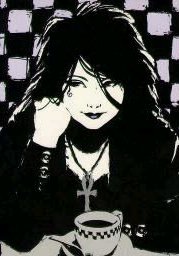
Death of the Endless is a fictional personification of death who appears in American comic books published by DC Comics. She first appeared in The Sandman vol. 2, #8, and was created by Neil Gaiman and Mike Dringenberg.

Vertigo Comics was an imprint of American comic book publisher DC Comics started by editor Karen Berger in 1993. Vertigo's purpose was to publish comics with adult content, such as nudity, drug use, profanity, and graphic violence, that did not fit the restrictions of DC's main line, thus allowing more creative freedom. Its titles consisted of company-owned comics set in the DC Universe, such as The Sandman and Hellblazer, and creator-owned works, such as Preacher, Y: The Last Man and Fables.
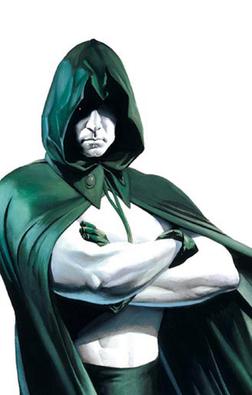
The Spectre is the name of several antiheroes who appear in American comic books published by DC Comics. The original version first appeared in More Fun Comics #52. The character was created by Jerry Siegel and Bernard Baily although some sources attribute creator credit solely to Siegel, limiting Baily to being merely the artist assigned to the feature.
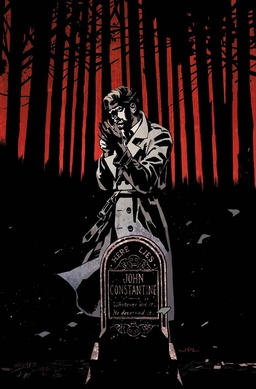
John Constantine is a fictional character who appears in American comic books published by DC Comics. Constantine first appeared in Swamp Thing #37, and was created by Alan Moore, Steve Bissette, and John Totleben.
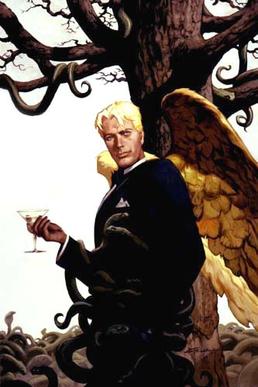
Lucifer Samael Morningstar is a character who appears in American comic books published by DC Comics. He is an adaptation of Lucifer—the Biblical fallen angel and devil of Christianity—and is one of the most powerful beings in the DC Universe. Though various versions of the Devil have been presented by DC Comics, this interpretation by Neil Gaiman debuted in The Sandman #4 in 1989. Lucifer appears primarily as a supporting character in The Sandman and as the protagonist of the spin-off Lucifer.

The DC Universe (DCU) is the shared universe in which most stories in American comic book titles published by DC Comics take place. In context, the term "DC Universe" usually refers to the main DC continuity. It contains such well-known superheroes as Batman, Superman, Wonder Woman, the Flash, Green Lantern, Aquaman, Green Arrow, Shazam, Martian Manhunter, and Cyborg; as well as teams such as the Justice League, the Justice Society of America, the Suicide Squad, Doom Patrol, and the Teen Titans. It also contains well-known supervillains, including the Joker, Lex Luthor, the Cheetah, the Reverse-Flash, Sinestro, Black Manta, Deathstroke, Black Adam, Brainiac, and Darkseid.

The Phantom Stranger is a superhero appearing in American comic books published by DC Comics, of unspecified paranormal origins, who battles mysterious and occult forces, sometimes under their Vertigo imprint. The character first appeared in an eponymous comics anthology published in August/September 1952.
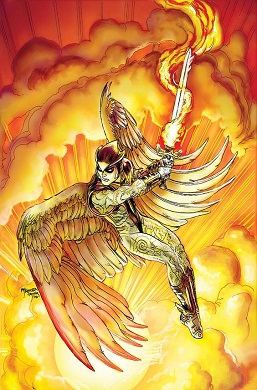
Zauriel is a fictional superhero in the DC Universe. Originally a guardian angel who served Heaven for millions of years, he willingly falls to Earth to serve humanity as their champion and joins the Justice League.
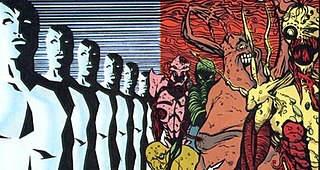
The Lords of Chaos and Order are a fictional group of supernatural entities featured in American comic books published by DC Comics. Although alluded to in 1st Issue Special #9, their physical appearance was first showcased in DC Special Series #10 (1978). While the group is commonly associated with Doctor Fate titles, they also hold prominent roles in various other comic book series.

Michael Demiurgos is a fictional character primarily in the Lucifer series by DC comics, and is a creation of Neil Gaiman and John Bolton based on the archangel Michael, appearing on an early related series called The Sandman. As an archangel, Michael Demiurgos led God's forces against Lucifer during rebellion in Heaven.

Jim Corrigan is the name of three fictional characters that have appeared in numerous comic books published by DC Comics.

Day of Judgment is a multi-title DC Comics miniseries and crossover storyline during the autumn of 1999. The limited series was written by Geoff Johns, with art by Matthew Dow Smith.

Elaine Belloc is a fictional character in the DC/Vertigo Comics series Lucifer created by Mike Carey specifically for that series. Her character is that of a young girl with special powers who encounters Lucifer and takes part in the adventures and battles surrounding him. Artist Dean Ormston based the character of Elaine on Vertigo editor Shelly Bond, while her best friend Mona was based on Ormston's wife Fiona Stephenson.
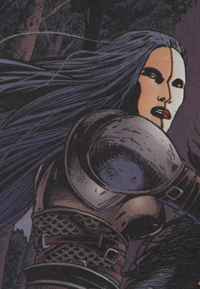
Mazikeen is a character who appears in American comic books published by DC Comics. She is one of the Lilim, a child of Lilith. She first appeared in The Sandman #22, and was created by Neil Gaiman and Kelley Jones. Her name comes from the term "Mazzikin", invisible demons which can create minor annoyances or greater dangers according to Jewish mythology.
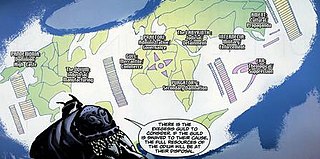
Hell is a fictional location, an infernal Underworld utilized in various American comic book stories published by DC Comics. It is the locational antithesis of the Silver City in Heaven. The DC Comics location known as Hell is heavily based on its depiction in Abrahamic mythology. Although several versions of Hell had briefly appeared in other DC Comics publications in the past, the official DC Comics concept of Hell was first properly established when it was mentioned in The Saga of the Swamp Thing #25–27 and was first seen in Swamp Thing Annual #2 (1985), all of which were written by Alan Moore and illustrated by Stephen Bissette and John Totleben.
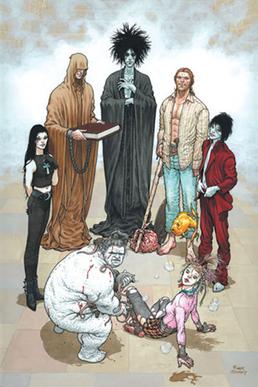
The Endless are a family of cosmic beings who appear in American comic books published by DC Comics. The members of the family are: Death, Delirium, Desire, Despair, Destiny, Destruction and Dream.















